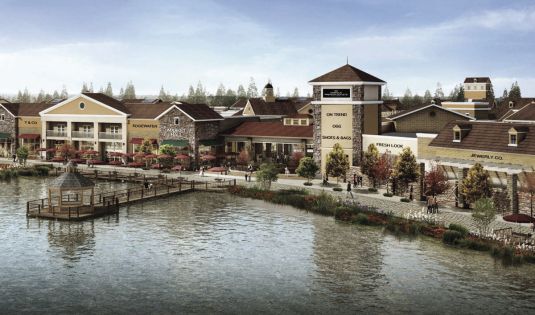
NAGS HEAD — Despite an outpouring of public support, a state commission effectively ended long-standing protections afforded to Jockey’s Ridge State Park.
The ����APP Carolina Rules Review Commission (RRC) voted 8-1 during a special meeting in Raleigh this week to adopt staff’s recommendation to object to 16 temporary rules the Coastal Resources Commission (CRC) adopted last month.
Among those was a rule designating Jockey’s Ridge an “area of environmental concern,” or AEC, because it is a unique coastal geologic formation.
AEC status restricts development and stipulates that sand that blows off Jockey’s Ridge, the East Coast’s largest living sand dune system, be returned.
The emergency rules will remain “in effect for a short period of time,” CRC Chair Renée Cahoon said, and then “they will be dropped.” Once that happens, those rules “just don’t exist.”
The date that will happen is unclear.
___
For and against
Jeanette Doran, chair of the 10-member RRC, said at Monday’s meeting that the RRC received hundreds of public comments over the weekend.
RRC meeting materials include 482 pages of comments in support of the rules and 48 pages against.
Cedar Point Developers, LLC — which has a court case pending against the CRC related to the emergency rules — and the ����APP Carolina Home Builders Association each sent letters of opposition.
An 18-page staff opinion advising objection to the rules by Brian Liebman, counsel to the RRC, draws on the letters of opposition by the two groups.
Cahoon said it seemed that the RRC weighted those two letters over the hundreds “that were positive.”
“I think the RRC had made up their minds they were not going to approve these rules no matter what,” she said.
But Doran said the outpouring of public support for continuing the rules, particularly for Jockey’s Ridge, worked against the CRC’s case for the necessity of temporary rules.
“There are a lot of reasons why the agency isn’t satisfying the temporary rulemaking requirements, but I think for me one of the biggest things is … that the volume of those public comments in fact weighs in favor of the more expansive notice and comment that’s established as part of the permanent rulemaking process,” Doran said.
Cahoon said the permanent rulemaking process takes at least nine months.
In the past, if there were disagreements, the commissions both “sat there and worked back and forth.”
Cahoon said the temporary rules “had been readopted” and reworked as the CRC “had been making changes to the verbiage” as requested, adopting definitions of words to be less ambiguous at the RRC’s behest.
But to no avail.
“It was stunning to us that they could just be dropped, and we weren’t working back and forth,” Cahoon said.
___
How protections were imperiled
Ashley Berger Snyder, the state Codifier of Rules and daughter of state Senate President Pro Tempore Phil Berger, struck 30 of the CRC’s longstanding rules from state administrative code after the RRC returned them last October, following legislative changes included in the state budget.
Snyder is named along with the RRC in a November lawsuit brought by the CRC and ����APP Carolina Department of Environmental Quality’s Division of Coastal Management that alleges “unlawful objections” to those 30 rules.
While the court case is pending, the CRC adopted 16 of those rules as emergency rules, then temporary rules, in an attempt to prevent them from lapsing.
RRC members said objections to some of the CRC rules had been raised beginning in 2022.
___
Threatened dunes
According to state parks Director Brian Strong, the sand dune system at Jockey’s Ridge is not being naturally replenished as it once was because of nearby development.
The dunes stood around 140 feet tall in the 1960s and ‘70s, but range in height from about 60 to 80 feet now, according to Joy Greenwood, Jockey’s Ridge State Park superintendent.
The ����APP Carolina Division of Parks and Recreation used the protections statute twice in the past seven years — in a combined effort with the ����APP Carolina Department of Transportation and the Town of Nags Head — to return sand to the park that migrated onto nearby roads and into residential neighborhoods, Strong wrote in a letter of support for the rule.
The largest sand relocation project at Jockey’s Ridge involved moving 220,000 cubic yards, or “10,000 of the largest dump trucks that are permitted on the road — this is how much sand we moved,” Greenwood said.
“The rule is an important tool in our toolbox … to keep the active management projects like this ongoing,” she said, so that the park’s over 1 million annual visitors can continue to enjoy it.
Now, sand that moves off the ridge onto private property won’t necessarily have to go back to the ridge once the emergency rules expire, according to Cahoon.
___
What’s next
The CRC will discuss next steps at its April 24-25 meeting in Manteo, but “everyone is still digesting what was said yesterday,” Cahoon said Tuesday.
Nags Head Mayor Ben Cahoon said Wednesday that he was “disappointed” with the RRC’s decision.
“It looks as if we’re just going to have to wait for the legal action to play out,” he said. In the meantime, town leadership may be “looking at possible zoning or ordinances to fill in the gaps.”




